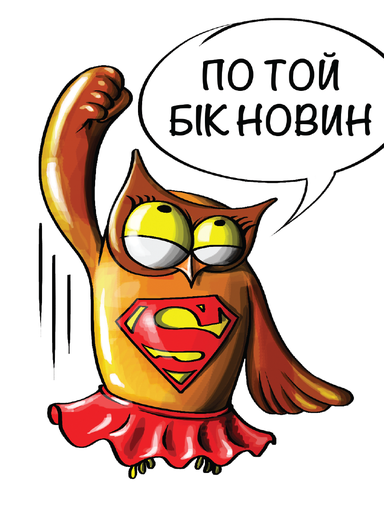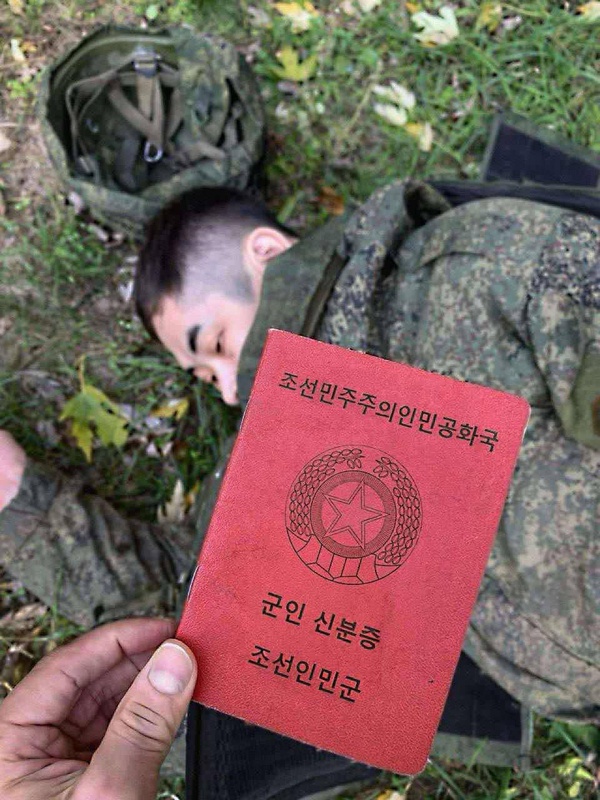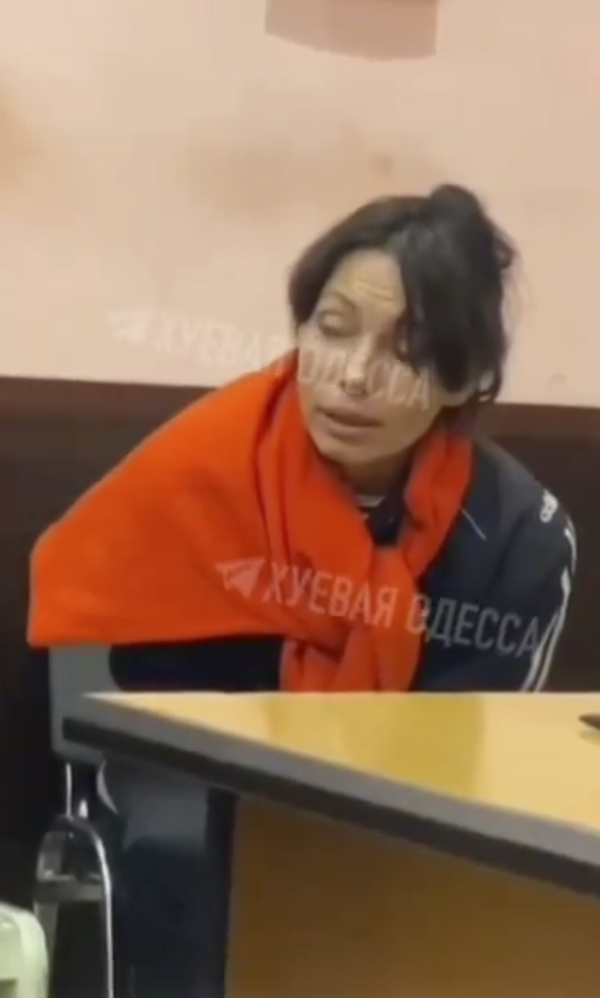russian fakes about the video from liberated Kherson

1) The Kherson video doesn’t show Kherson residents, but specially trained “zhduny activists” (referring to the waiting creature created by Dutch artist Margiet van Breevort); the video is only a staged production by the SBU and the GRU.
This version was disseminated by a number of pro-russian telegram channels with reference to Kyiv “political scientist” Alexei Niechaiev, who described how “film directors” work in the liberated territories. Ukrainian soldiers allegedly enter a settlement without a fight after it has been voluntarily abandoned by the Russians, and then spread stories about its “liberation." Then, via messenger services, the intelligence service together with local activists of pro-western parties arrange to “prepare a nice welcome” for the Ukrainian army. The activists send instructions to the townspeople, who welcome the soldiers with open arms, because, like the characters in the movie “Wedding in Malynivka,” they don’t care what kind of government is in power in their town.
When Ukrainian troops defeat the russians, the latter call it a “gesture of goodwill” or a “tactical regrouping.” By proclaiming that the liberation of part of the Kherson Region was achieved without a fight, the russians are deliberately downplaying the merits of our defenders. Behind the enemy’s so-called “gesture of goodwill” we should note the enormous efforts of our troops to continue fighting and advancing. This was underlined by the Commander-in-Chief of the Armed Forces of Ukraine Valeriy Zaluzhnyi, as well as our defenders. Another “gesture of goodwill” was confirmed by Oleksiy Hromov, Deputy Chief of the Main Operational Directorate of the General Staff of the Armed Forces of Ukraine, at a briefing on November 10: “On the Kherson direction, the Ukrainian Defense Forces destroyed the enemy’s logistics routes and supply system, disrupted their command and control system, and thus left the enemy no choice but to flee.”
The story of activists who use western money to mobilize residents to “rejoice” at the arrival of the Ukrainian army is aimed at the russian domestic audience. The russians attempt to justify themselves to the supporters of the “russian world” and neutralize the stories of their retreat. After all, for almost nine months, they’ve been saying that russia is in Kherson to stay, because it’s a “native russian city.” And yet, there are videos of dozens of Kherson residents arriving at the city centre, literally carrying the Ukrainian defenders in their arms, and even joyfully kissing a Sky News journalist.
It’s no coincidence that the residents of liberated Ukrainian towns and villages were compared to peasants in the soviet movie “Wedding in Malynivka”. This is supposed to be a funny film, but in fact, it’s pure propaganda, creating a cinematic image of Ukraine according to the soviet authorities’ image of all Ukrainians: a russian-speaking country that welcomes soviet troops with bread and salt.
And those who oppose the soviet regime are thieving fools, “khokhols”, who live only for vodka and salo. In the imagination of modern russian propagandists, the portrayal of Ukrainians greeting their defenders in the liberated territories isn’t much different from the soviet image.
As for “Kiev” political analyst Niechaiev, he’s known only thanks to his personal telegram channel with about 3,000 followers, the column “What's happening in “Kiev”?” in a russian publication, and his Vkontakte page. We haven’t found any information about this political analyst in the Ukrainian media community. The topics of the “Kiev analyst’s” texts in his column are quite specific: he promotes pro-kremlin narratives from the perspective of an alleged resident of the Ukrainian capital.
2) The video shows people who “sabotaged, killed, organized diversions, and defiled everything in every possible way”.
The video shows local residents who lived under occupation for more than eight months. For the russians, these people are saboteurs, because they never accepted the “real liberators”, and preferred to wait for the Ukrainian defenders. The courageous people of Kherson really fought with all available means. In March, during the first days of the occupation, they protested with blue-and-yellow flags and slogans “Kherson is Ukraine!” After the russians used gas and stun grenades, the number of people attending the rallies decreased, but Kherson residents still showed their disagreement with the occupation “authorities” and continued to gather on the square for some time. Then, the russian special services began using the rallies to identify patriotic citizens. The russians used their “favourite” methods: imprisonment, intimidation, abduction, torture, and murder. The rallies stopped.
As can be seen from the photos and videos, despite the fact that this could have led to imprisonment, many people kept their Ukrainian flags and waited for the right opportunity. Such an opportunity came on November 11, when the Ukrainian military appeared on the streets of the regional centre.
In addition, there’s a very strong resistance movement against the occupation called the Yellow Ribbon in Kherson Region. In many regional temporarily occupied settlements, thanks to the brave men and women of this movement, one can see patriotic graffiti, leaflets, blue-and-yellow ribbons, and slogans, such as “Kherson will be liberated!” and “The Ukrainian Armed Forces are near!”
3) It really doesn’t matter that the Ukrainian Armed Forces entered Kherson; the city is divided by a large area of water, the Dnipro. Those who are with the russians are “on their bank”, and those who are against them “swam over to the enemy’s side.”
On November 9, the russian ministry of defence announced that it had withdrawn its troops from the right bank of Kherson Region. The retreat was preceded by a so-called “evacuation of civilians” from the right to the left bank of the Dnipro River. Since October 19, the occupation authorities have been gathering people willing to leave Kherson and transporting them by boat to Oleshky and Hola Prystan. The first deputy chairman of the regional council, Yuriy Sobolevsky, posted a photo on his telegram channel showing that few people wanted to actually leave.
In a comment in “Suspilne”, Director of the Black Sea Centre for Political and Social Studies Oleksandr Moshniahul called the deportation a psychological operation, whereby the russian audience is shown how the occupation authorities are allegedly concerned about Kherson. The expert assumed that some residents of Kherson Region would be transferred to the left bank, but that they wouldn’t stay there, because they would probably be deported further to russia.

4) Ukrainians hug the soldiers, who then mobilize or get rid of them, because Ukrainians are not russians, who distribute humanitarian aid and hand out social payments. We should also expect reprisals against civilians in occupied Kherson and Beryslav.
It’s no joke that, even after Bucha, Irpin, and Izyum, russians really write such nonsense. When Ukrainian soldiers enter the territories liberated from the occupiers, they are confronted with russian war crimes.
They found torture chambers where civilians were brutalized; rooms where people were held for weeks.
Investigators collected evidence of torture and brutality after exhuming hundreds of bodies in mass graves. However, despite all the collected facts, russians continue to call themselves “liberators” who arrive in the occupied territories with a “humanitarian mission.” Blaming others for their own crimes is a long-standing russian tactic.
5) Kherson region is the official territory of the russian federation, temporarily occupied by Ukrainians, and 87% of the patriots who voted in favour of the referendum will have their say.
What is happening now in the liberated territories is further proof that the “referendum” held by the russians was a parody of what the residents really wanted, and that the number of votes proclaimed as the final result have nothing to do with reality. In our text of September 23, we described in detail how the “voting process” took place: in the territories captured and occupied by the enemy during the war. This alone made the “voting” illegal. In addition, the “election commission representatives” went door-to-door accompanied by armed russian soldiers, and it took a week for the organizers to collect the necessary number of votes.
As a result, a number of international organizations reported that the results were null and void, as they didn’t comply with either national legislation or international standards. In its statement, the Venice Commission warned that any referendum on the status of the territory should be preceded by debate and serious negotiations between all stakeholders… and that holding referendums during a state of emergency, including war and military threats, contradicts European standards. No civilized country has recognized the results of the referendums in the occupied territories. Kherson Region is a temporarily occupied Ukrainian territory that is gradually coming back home to Ukraine, thanks to the Armed Forces of Ukraine ![]()





